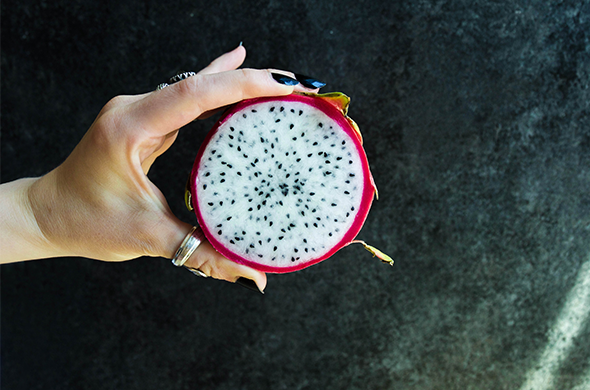Dragons might not be real but this fruit sure is. Known for its hardy pink skin and its unique seed-speckled flesh, dragon fruit tastes like a mix between a kiwi and pear with a slight crunchiness.

Beautiful and vibrant on the outside, its inside is where the magic resides. Dragon fruit is packed with many natural antioxidants like betalains. Betalains are actually the class of pigment (specifically red and yellow) that give dragon fruit its captivating color. However, they’ve been found to contribute a lot more than just pretty color. In some studies, it appears that betalains may reduce LDL cholesterol levels, contain anti-inflammatory properties, and stimulate the growth of new blood vessels.
Our American love affair with this exotic fruit began in 2008, when they were finally allowed into the country.
More than just an Instagram worthy fruit, dragon fruit is a good source of vitamin C, containing about 15% of the daily value in one small fruit. This makes it the perfect fruit choice for anemic individuals because its high vitamin C count enhances iron absorption (which dragon fruit also contains)!
Seasonal and somewhat rare, your best chance of finding ripe dragon fruit is during the summer months! To be extra prepared when searching for it in the store, refer to it by its other name, Pitaya. But don’t be intimidated by its hard outside. You can chill the entire fruit in the fridge to make it easier to spoon into the flesh.

If you crave this exotic beauty during the winter, look for frozen packets to add to your kefir recipes. Like these: